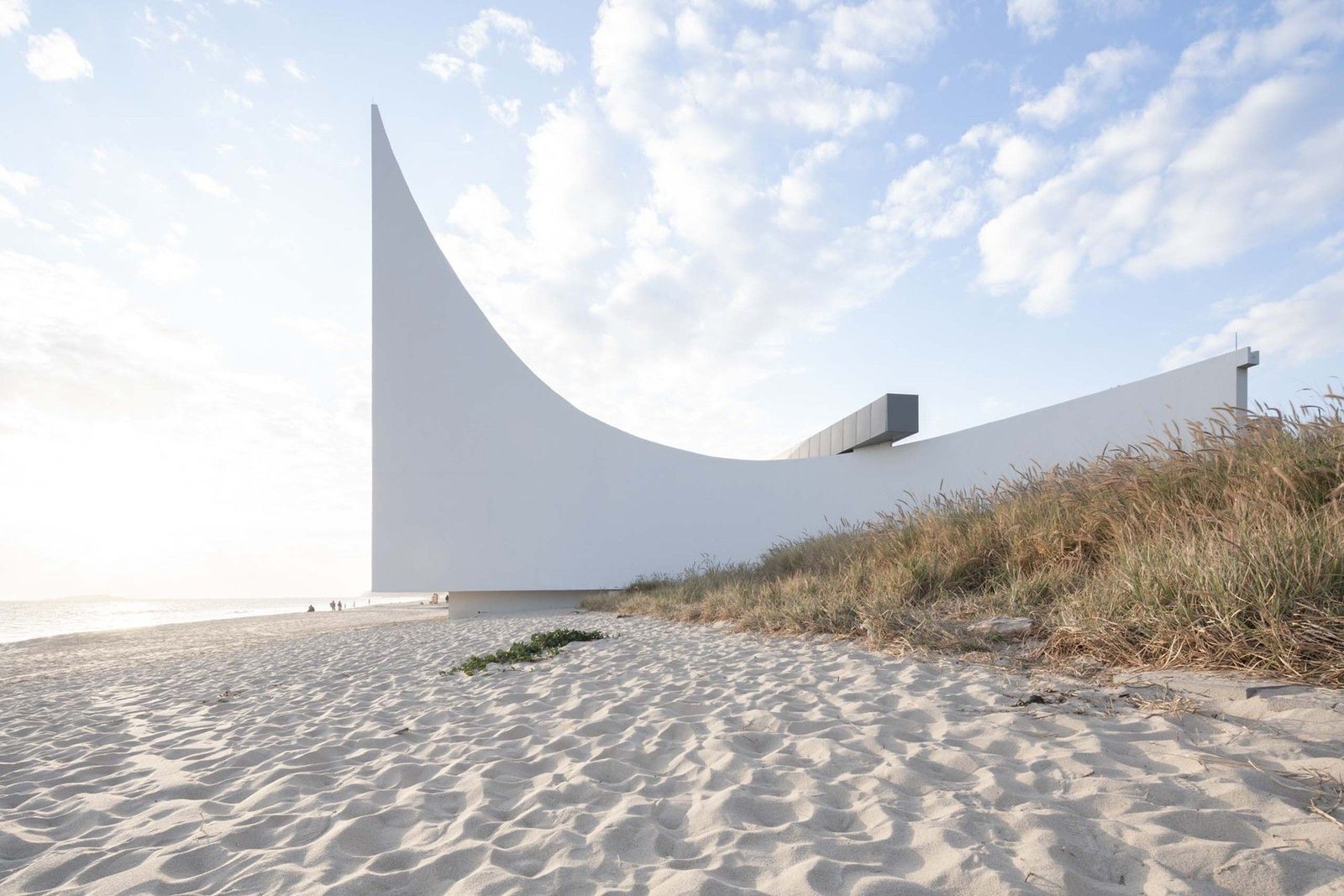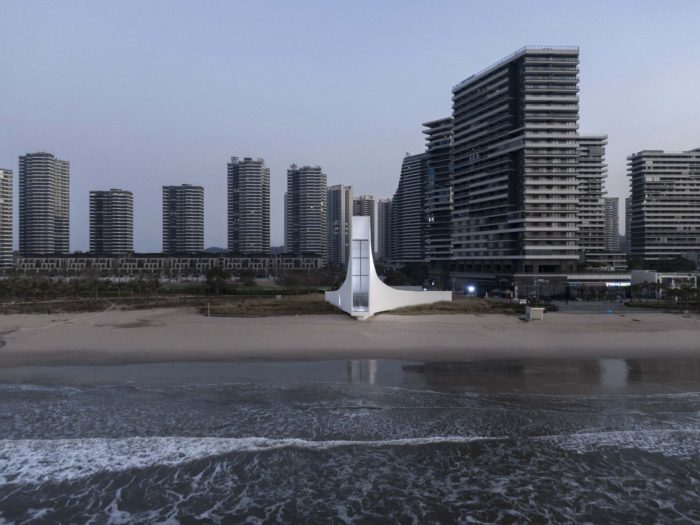
Chapel of the Jinting Bay | O-office Architects
About Chapel of the Jinting Bay
Both on land and at sea. The coastal areas were historically ignored because Ancient China was geographically and politically oriented on the mainland. Because these coastal areas were remote from the regime, they gave rise to a more relaxed and diverse vocabulary, and the topographical context where land and water crossed gave rise to a more incredible feeling of spontaneity and local sensibilities. As the world’s maritime civilization expanded, the coastal zone eventually became a site of exchange between China and foreign cultures, enhancing modern coastal settlements’ physical and non-physical cultural ecology.
Cities and towns are two types of places. The mainland’s coastal zones have historically and organically developed fishing towns and commercial settlements feeding off the enormous South China Sea. The fishermen spent most of their time offshore, subsisting on a fishing economy that evolved into different coastal fishing towns. In modern times, it has grown into a larger fishing town and has steadily developed into a large-scale commercial metropolis. Primary highways linked these towns to establish a succession of coastal village systems, and the hills along the coastline edge produced a unique cultural and geographical network, allowing for the development of an organic agricultural and commercial system along Guangdong’s southeast coast.
Capital spillover from the central cities flowed to these fishing towns in search of tourism opportunities and landscape resources, and the construction of new cities began in these long-neglected areas in the middle of the expanding cities and fishing villages, fueled by the new round of infrastructure construction. The construction introduced a new townscape typology to the local natural and humanistic landscape, introducing a heterogeneous variant of the pre-existing high-density city that quickly occupied the gap in between, triggering a new urbanization process driven by real estate production along the coastline.
The sea and the statue. We landed in Magong, one of the old-time fishing communities still in operation today, as we traveled west down the shore and across the hills. Our visitors were met with bustling marketplaces and long lines of fishing boats on the beach. Although the majority of the people have built their own multi-story houses in accordance with their property grids, the hamlet has already displayed signs of urbanization as a result of the seafood trade and the newly created tourist industry.
For decades, fishermen have lived and worked on the edge of land and sea, sailing out for extended periods during the fishing season. Humanity appears minuscule and vulnerable in the face of an immense environment, and fishermen wandering on the sea seek some psychological and emotional connection to home and land and a link with mother nature. Thus, the Matsu culture was cultivated and emerged along China’s southeast coast, later spreading to Southeast Asia and the rest of the world.
The Cultural Plaza is located in the heart of Magong town, and it houses a classic-style chapel that serves as the western basilica for ceremonial worship and festivals. The rear courtyard is located behind the chapel, with a giant statue of Matsu constructed on the platform above, facing the South China Sea – Fishermen sailing many nautical miles away can still see her exquisite figure towering above the horizontally sprawled townscape and waterscape.
The Sea and the Statue. After tracing the town’s history and speculating on its future, we returned to Jinting Bay – before we were the confusing high-rise clusters and the beach strewn with tourists – the presence of the water is undoubtedly a different backdrop and source of inspiration for them. As we received the commission to design a place of ceremonial worship, highlighting and terminating the central axis of this rising metropolis facing the sea, we attempted to investigate and create this new “image of the sea” with a comparable historical viewpoint.
Outside, the “Statue of the Sea” establishes a new spiritual and symbolic anchor for the rapidly developing coastal city, re-establishing a link between city and town, land and sea.
Project Info:
Area: 384 m²
Year: 2020
Photographs: Siming Wu
MEP Consultant: Bun Cong M&E Design
Principal Architects: Jianxiang He, Ying Jiang
Project Team: Chengqiang Huang, Xinqian Cai, Weisen Peng
Structural Consultant: Xiaojie Lao, Xiling Sang
Floodlight Design: BPI
City: Shanwei
Country: China











